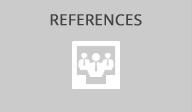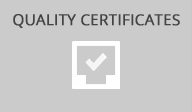Erline & Data Transmission Cables
Data Transmission Cables In Structured Cabling
Data transmission is the process of transfer data over a point-to-point or point-to-multipoint communication channel, like a communication medium to one or more computing, network, communication or electronic devices. While researching data transmission cables, you will come across the words digital communications cables or digital transmission cables, in fact, these all patterns are used for the same product categories. What is referred to as data here are electromagnetic signals. Examples of data are microwave, infrared signal, electrical voltage or radiowave.
When measuring data transfer rate, bits-per-second is taken as a basis. In this measurement, we can say that each bit is equal to a binary number. A wide range of different constructions of cables are available in order to cover data transmission needs in automation systems, computer networks and electronic control systems.
• Local Area Network Cables
LAN cables are a particular sort of information cable utilized in computer systems. There are two sorts of nearby zone organize cables. The primary may be a standard cable that interfaces the computer to a router or hub, and the moment is called a crossover cable that interfaces the two computers.
Computer networks, which provide the productivity and communication capabilities that will enable organizations to be successful, have now become the most important elements. Data transmission is significant for growing businesses, institutions and service providers to be able to build scalable networks that combine voice, video, data transfer and storage on an end-to-end intelligent network. All communication over a single infrastructure offers several advantages such as reduced costs, increased productivity and efficiency, elimination of the complexity of using separate networks, and scalability.
In order for the network systems to work fast and without problems, the cabling infrastructure must be well established. The most used interface in network systems is the cabling structure, and structured cable systems are prepared to ensure the smooth growth of the network system. For this reason, a correct design and project should be done while creating the cabling infrastructure, quality workmanship and materials should be used, testing, labeling and documentation should be made in accordance with the standards and used for years.
There are generally three levels in structured cabling:
1. Floor distribution cabling (horizontal cabling)
2. Building distribution cabling (vertical cabling)
3. Campus (main) distribution cabling
ERLINE® branded Cat-5e U/UTP and Cat-6 U/UTP copper conductor data transmission cables that we produce as Erse Kablo are generally used in the horizontal cabling section of structured cabling. ERLINE® ethernet cables have been manufactured according to IEC 61156-1 & -5 and ANSI/TIA 568-C.2.
• RS-485 Data Transmission Cables
It is defined by EIA (USA Electronic Industry Association) as a two serial communication standard and more correctly named as EIA/TIA-485. Communication systems based on RS-485 communicate digital information over twisted pair wire from transmitters to receivers. Devices can be apart from each other up to 1220 meters without any repeaters and 32 RS-485 transceivers (32 drivers 32 receivers) can occupy a bus and communicate at rate from 100Kbps (at 1200 m) up to 10Mbps (at 12 m) varying by cable length. These systems utilize balanced outputs and differential inputs. As a result, they provide better noise immunity than single-ended systems such as RS-232. Thus, links using RS-485 operate over longer distance at higher speed than links using RS 232. RS-485, a serial transmission medium developed for use over longer distances, where high speed and more transceivers are required, can be used in two- and four-wire networked systems. The tri-state capabilities of RS-485 transmitters must be used to connect to the two-wire multi-bus. This structure allows multiple transmitters and receivers to be connected to a two-wire multi-bus. In addition, the master node driver and all slave drivers can be used to connect four-wire systems to all slave receivers.
• Bus Data Transmission Cables
Profibus is a data transmission system of host computer and other computers, sensors, motors, thermocouples, automatic valves which are parts of scada* system on a single line whereby high data speed, low connection costs and plug-and-play are central. It refers to the network protocols used for real-time distributed control. (*The name of the system that provides data-based control, monitoring and reporting of all equipment of a manufacturing facilities or enterprise is called, Supervisory Control and Data Acquisition.)
There are two standard versions of BUS cables (or industrial communication cables) being producing in Erse Kablo. First one is Profibus DP and the second one is Profibus PA.
Erse’s Data Transmission Cable Solutions for the Customer Expectations
Erse Kablo's produces quality data transmission cables for use in places requiring high-speed applications. It is focused on achieving the best possible electrical values.
Data transmission cables which have HFFR (Halogen Free Flame Retardant) sheathing are used in places where people are densely populated (such as hospitals, high residences, shopping centers, hotels etc.) and it is used in places where there should be absolutely no harmful gases to protect human health.
We are at your disposal for your demands; you could have best data transmission cable price from our export sales team and our technical team would be pleased to answer your questions about technical points. We will be happy to advise you on our product range and the possible applications of Erse’s data transmission cables. You can contact us with e-mail or head office’s telephone numbers.


































